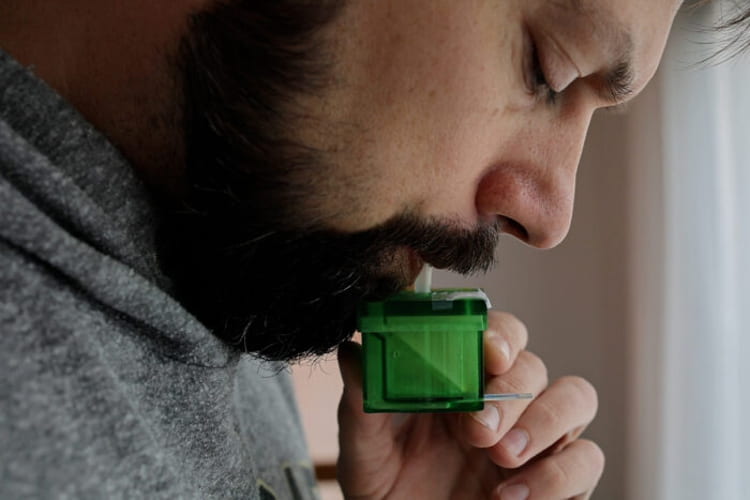Scientists at Washington University in St. Louis have developed a breath test that quickly identifies those who are infected with the virus that causes COVID-19. The device requires only one or two breaths and provides results in less than a minute.
The study is available online in the journal ACS Sensors. The same group of researchers recently published a paper in the journal Nature Communications about an air monitor they had built to detect airborne SARS-CoV-2 — the virus that causes COVID-19 — within about five minutes in hospitals, schools and other public places.
The new study is about a breath test that could become a tool for use in doctors’ offices to quickly diagnose people infected with the virus. If and when new strains of COVID-19 or other airborne pathogenic diseases arise, such devices also could be used to screen people at public events. The researchers said the breath test also has potential to help prevent outbreaks in situations where many people live or interact in close quarters — for example aboard ships, in nursing homes, in residence halls at colleges and universities or on military bases.
“With this test, there are no nasal swabs and no waiting 15 minutes for results, as with home tests,” said co-corresponding author Rajan K. Chakrabarty, PhD, the Harold D. Jolley Career Development Associate Professor of Energy, Environment & Chemical Engineering at the McKelvey School of Engineering. “A person simply blows into a tube in the device, and an electrochemical biosensor detects whether the virus is there. Results are available in about a minute.”
The biosensor used in the device was adapted from an Alzheimer’s disease-related technology developed by scientists at Washington University School of Medicine in St. Louis to detect amyloid beta and other Alzheimer’s disease-related proteins in the brains of mice. The School of Medicine’s John R. Cirrito, PhD, a professor of neurology, and Carla M. Yuede, PhD, an associate professor of psychiatry — both also co-corresponding authors on the study — used a nanobody, an antibody from llamas, to detect the virus that causes COVID-19.
Chakrabarty and Cirrito said the breath test could be modified to simultaneously detect other viruses, including influenza and respiratory syncytial virus (RSV). They also believe they can develop a biodetector for any newly emerging pathogen within two weeks of receiving samples of it.
